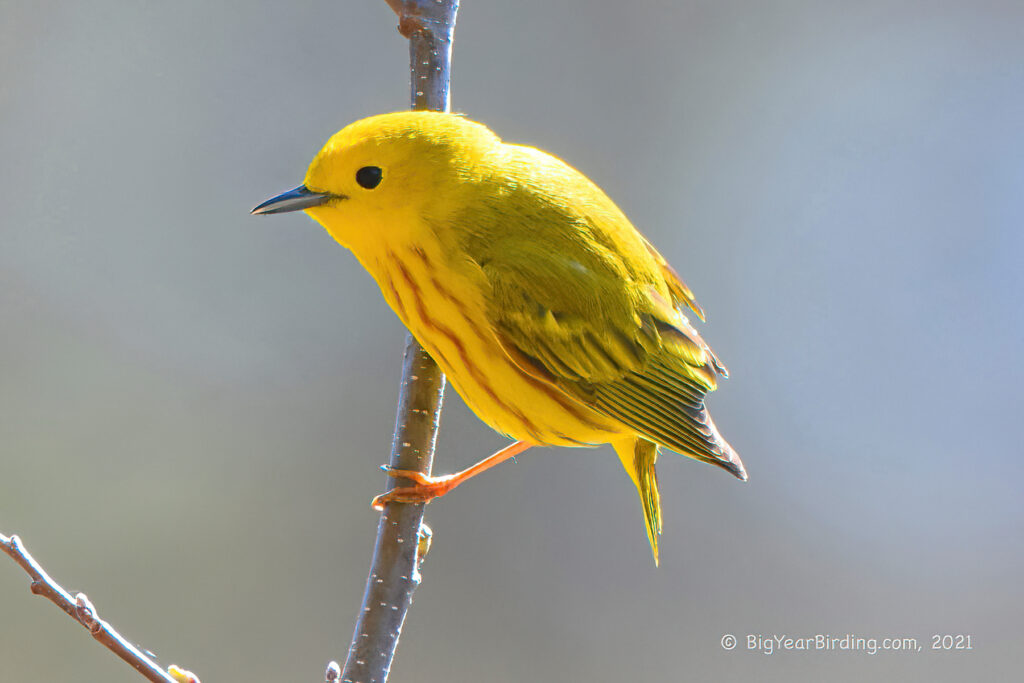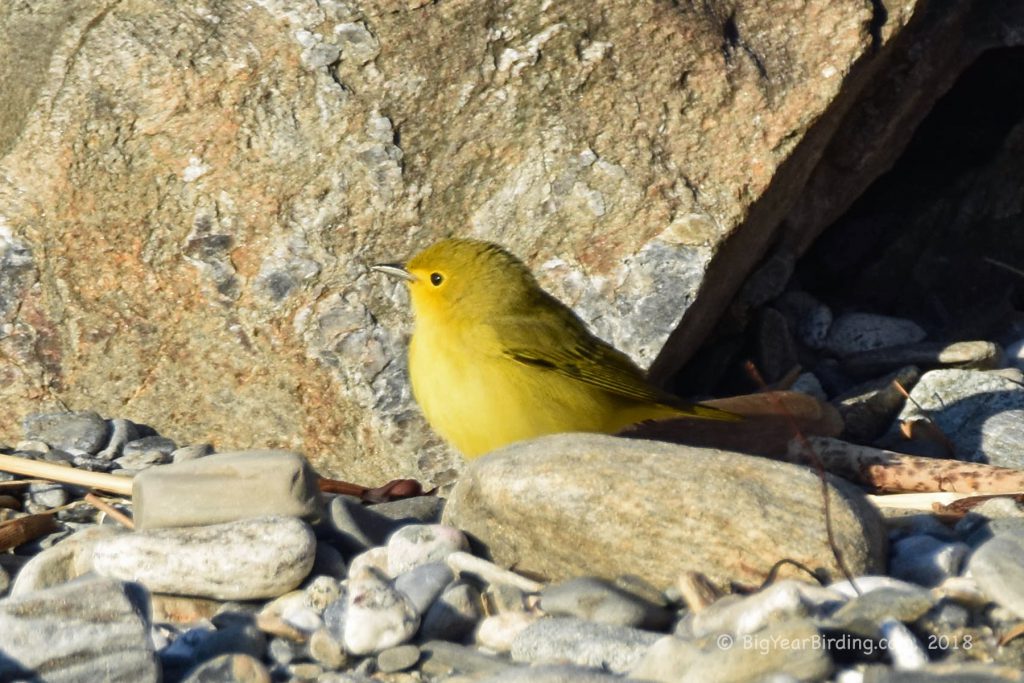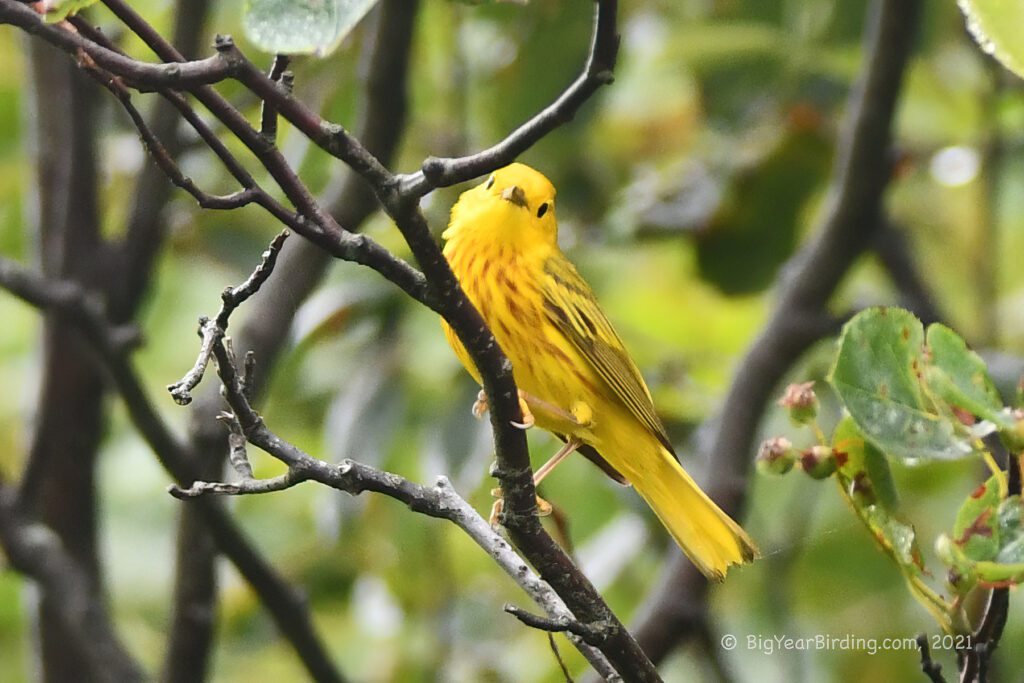
The Yellow Warbler (Setophaga petechia) is a small, brightly colored songbird that is widely distributed across North America. They measure about 4.5 inches in length and weigh around 0.3 ounces, with males being slightly larger than females. They have a wingspan of about 7.5 inches. The Yellow Warbler is an olive-yellow color on the upperparts, with a bright yellow belly and chest. The males have reddish streaking on their breast, while females have a paler, more subdued version of the male’s markings. They have a thin, pointy beak that is perfect for catching insects, which make up the bulk of their diet.

The Yellow Warbler is easy to identify in the field, with its bright yellow plumage being its most distinguishing feature. Their song is also very distinctive, a series of high-pitched, sweet-sounding notes that are often described as sounding like “sweet-sweet-sweet, I’m so sweet”. Another field mark to look for is the male’s reddish streaking on the breast, which is absent in females. Juvenile Yellow Warblers look similar to adult females, but with a streakier appearance on the breast and a paler, more olive-colored head.
The Yellow Warbler is a migratory bird that spends its breeding season in North America and then migrates south to Central and South America for the winter. They are known to migrate long distances, with some individuals traveling as far as 3,000 miles between their breeding and wintering grounds. They generally arrive in their breeding grounds in late April or early May and start building their nests in dense vegetation. They can be found in a variety of habitats, including open woodlands, shrubby fields, and even suburban areas.

The Yellow Warbler is a common and widespread species, with a stable population. They are not considered endangered or threatened at this time. However, like many songbirds, they are vulnerable to habitat loss and fragmentation, which can limit their breeding success. To support the continued success of the Yellow Warbler and other songbird species, it is important to preserve and protect their natural habitats, including wetlands, forests, and shrubby fields.

